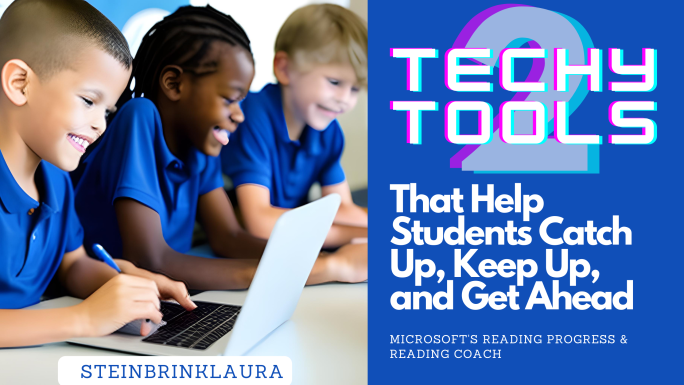In this post, I provide a detailed account of how Teach Aid can assist teachers in developing teaching materials. It highlights the time-saving aspect and the customizable nature of the platform. Want AI to work for you? Check out Teach Aid.
Author: Laura Steinbrink
Think Pair GROUP Share
This post discusses the benefits of the "Think Pair Group Share" strategy, an extension of the well-known "Think-Pair-Share" technique. The author emphasizes the importance of collaboration in learning and describes a detailed process for implementing the strategy, highlighting its effectiveness in promoting student engagement, refining thinking, and supporting learning. The activity involves individual, pair, and group discussions, culminating in a sharing phase. The author also underlines the formative assessment aspect and the flexibility of the approach.
Dictation To The Rescue!
Dictation tools are valuable for students, not just secretaries. If you are looking for ways to get students reflecting on their learning, dictation is a great way to start. This post explores one activity in a series dedicated to using dictation to increase student learning.
Fishing Essay Graphic Organizer
This post may seem primarily for those who teach writing, as opposed to my usual posts that work for most content areas or teaching in general. However, even if you don't teach writing, you might get a nugget by looking into how the analogy of fishing, coupled with some brain science (dual coding) or researched-based … Continue reading Fishing Essay Graphic Organizer
Is This For A Grade?
This post explores how to rethink the use of whiteboards or sheet protectors as whiteboards in class to move students away from thinking a grade has to be attached to every activity.
2 Techy Tools That Help Students Catch Up, Keep Up, and Get Ahead
Ever wondered what tech tools are out there that can maximize learning as we enter the era of Artificial Intelligence? Worried about reading or math gaps as we continue post-covid? Introducing Microsoft's (MS) Learning Accelerator tools for students, specifically, Reading Progress and Reading Coach within Microsoft Teams. Not a Microsoft school? No problem! In this post, I'll walk you through what the MS Learning Accelerators, Reading Progress and Reading Coach, can do to help students improve their reading, and how to get started!
2 Terrific Teacher Tech Tools
This week's spotlight lands on a Chrome extension and a Docs/Slides add-on that I have been exploring recently. While they both can save time, which all teachers will appreciate since time is a very valuable commodity in this profession, they function very differently. At this point in my exploration, I am by no means an expert on either of them yet, but I am definitely an enthusiast of both. Introducing Text Blaze and Stickity! Both of these can save you time AND help students.
4 Ways to Support Your New Teachers
Anyone who has been in and around education over the last twenty years or more can attest to the decreasing number of qualified teachers seeking jobs amid the increasing number of teaching vacancies. Teachers leave one school district for another, or they leave the profession, for various personal and professional reasons. As districts all over the United States see the applicant pool dwindle for their respective positions, more are becoming laser-focused on perhaps their greatest asset, the beginning teacher.
4 Tech Tools That Can Elevate Student Learning
Students learn better when they are able to apply what they are learning from the textbook to real-world problems and situations. There are a lot of ways to do this without technology, sure. We also know that when it comes to technology, there is no shortage of tools and apps available for teachers to use with their students. Technology is changing the way we teach, learn and work, so careful consideration of which tools to use is critical. As educators, we need to prepare our students for the digital world in a blended-learning classroom and offer them tools that will allow them to study independently and with their peers. The top 4 tech tools for student learning that I have selected for this post include Bookwidgets, Quizizz, Blooket, and Microsoft Flip.
3 Areas to Consider When Creating A Positive School Culture
“Nothing frustrates a good teacher more than the district hanging on to a bad one,” an educator commented to me recently. While true, this is a problem that is not going away anytime soon. Since the pandemic, teaching has suffered as a profession. Too much negativity from one or more teachers can quickly spread to others if not addressed. However, with the nationwide teacher shortage, a certified teacher, even a poor one, seems preferable to a long-term substitute, even though the culture of the building or potentially, the entire school district may suffer.











